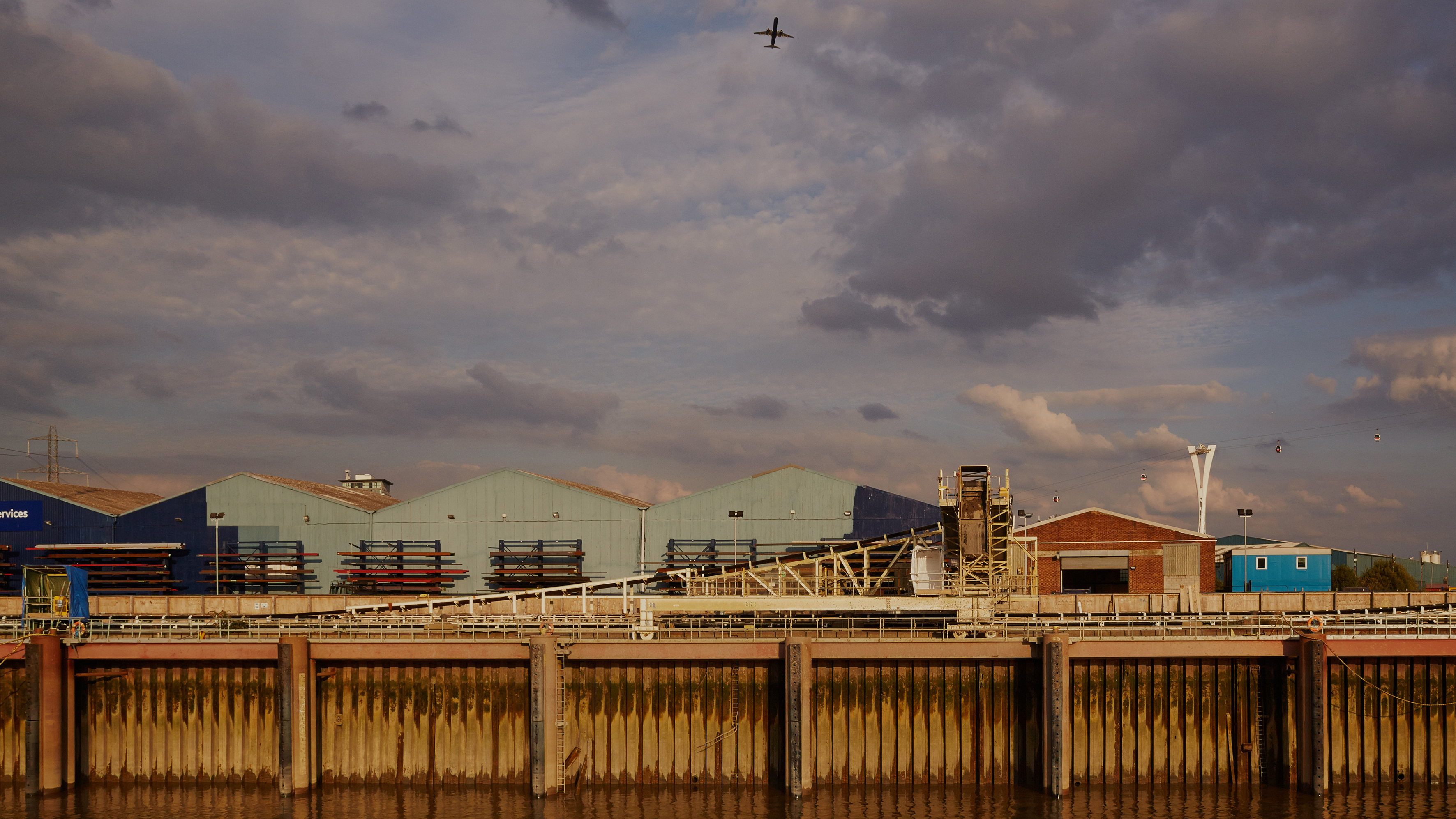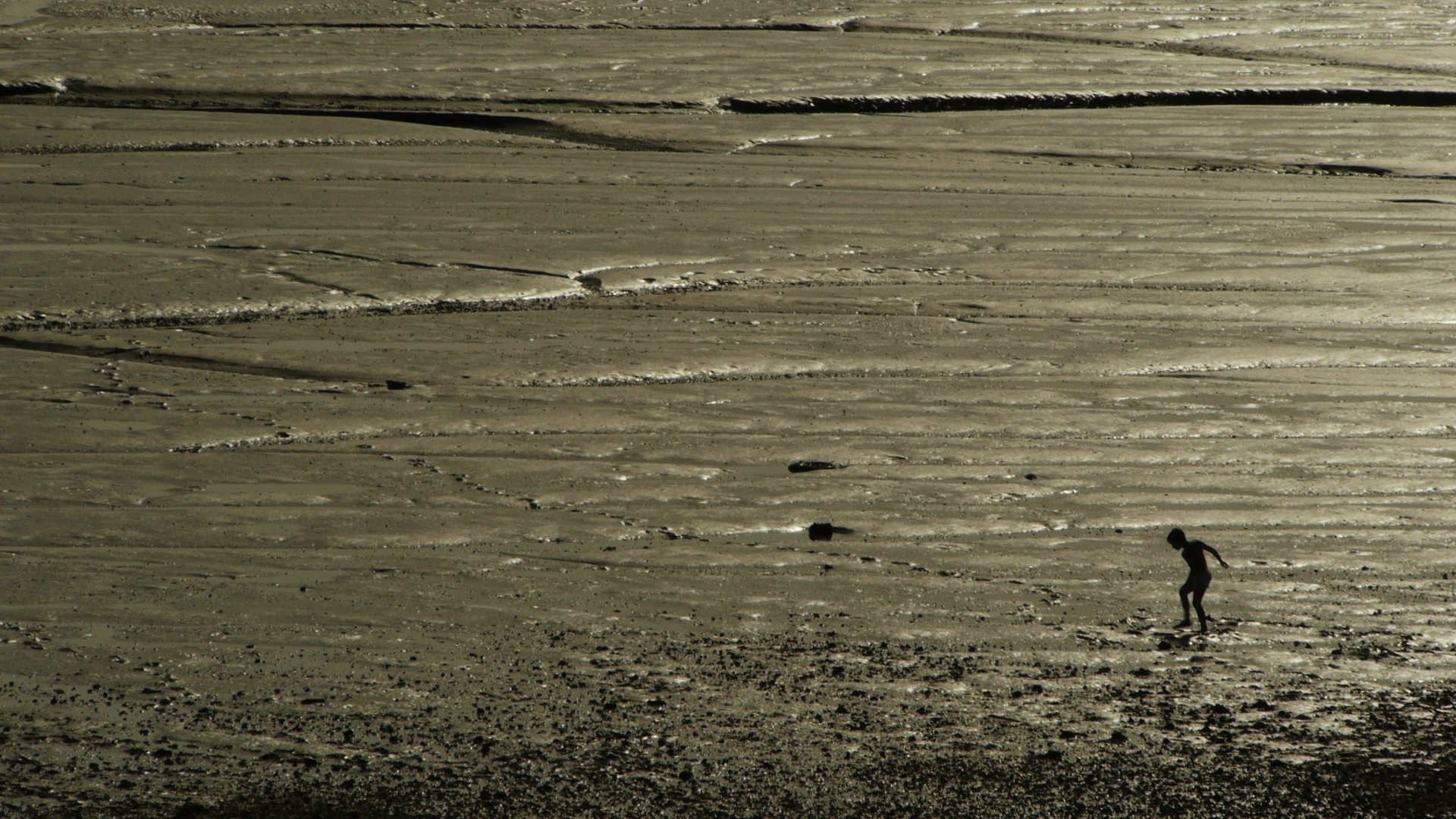I love the fact that on the coast you can just travel along the edge until the next place. Knowing the way stops becoming an issue even though it isn’t always clear exactly where you are. Everything is continuous.
The day that the summer finally breaks into thousands of tiny points of grey drizzle I head east from London in a bus roughly following the north bank of the Thames up to the mouth of the estuary to see Points of Departure, the visual arts component of Estuary 2016, a multi-disciplinary arts festival in Southend and Tilbury, Essex, presented by arts production company Metal in celebration of the estuary region.Curated by Gareth Evans and Sue Jones, Points of Departure features works by 26 contemporary artists in and around the Grade II-listed Tilbury Cruise Terminal across the river from Gravesend. As the programme puts it, Tilbury is situated at the point where ‘the Thames loses its city brackishness and becomes saline and marine as the tides carry the river out to the North Sea’.
A port is a way out and a way in.
Here where the river opens to the sea the linear features of coast and river don’t so much blur as multiply and shift. The topography here is time-based, changing by the minute according to tides and visibility and position. Up at Southend the pier is the longest in the world, built to accommodate the 1.3-mile difference between high and low tide which turns over the course of six hours daily. Today the sea is high for full moon and there’s water everywhere.
It makes sense that many of the artists chosen by Evans and Jones have made works of art that use time and landscape as starting points. The show is sound and video heavy and long hours could be spent listening to each one from beginning to end should the visitor be so inclined.

I begin by taking off my shoes and entering a dark space carpeted with many different woolly hides to listen to a hypnotic sound piece by London-based artist Bronwen Buckeridge. Her soundscape of the estuary wind and noises of herded farm animals accompanies a dialogue between the artist and a dream therapist interpreting a dream of Buckeridge’s. The two voices seem to witness something together just out of reach, on another plane. Coming out into the light of the big sky is like waking from sleep and I drift then, dazzled through a GPS-tagged sound collage by Jem Finer that flips convention by rendering the visual film incidental to the music.
Finer’s GPS tag marks his studio where the work was recorded, downriver in London at Trinity Buoy Wharf. But much of the work on display is made nearby on residencies run by Metal and this engagement with the place feels valuable. Work made outside of London in the UK has, in a very material sense, more time put into it, has attention given it that no London-based artist or audience can afford and it’s worth travelling for. The pathetic fallacy of edge-land, greys and weather stratifying in every direction, runs strong, conceptually and viscerally in this show. Points of Departure’s encounter with landscape at times feels romantic, but it is anchored by detailed research.

Louisa Fairclough’s astonishing works of found sound function almost like auditory photographs and are the sonic equivalent of a perfect snapshot. My synaesthetic confusion continues: sound has an amazing way of destabilising the boundary between within and without. They pair well with Jem Cohen’s wonderful hour-long film World Without End (No Reported Incidents). The film is a documentary essay, with a total absence of editorial voiceover and an almost completely diegetic soundtrack. It is a shock to see Cohen’s lens turned on small-town British life. It feels so rare to see this taken seriously here: the stuff of every day life documented for its own sake and not dragged into the service of some reality TV meta-narrative. Stripes of headlight strobe across the body of a dead pigeon, a rainy street is reflected in a mirror in a charity shop window with a post it on it saying:
RETRO
£5
Kites fly over the low tide. The owner of a local curry house describes how he used to work as a chauffeur for Lehman Brothers and how after the bankruptcy he got his wages that they owed him by hiding the boss’s £135-grand car until they paid him. Now he wants to expand his curry business internationally. Some guy explains in excruciating but impressively illuminating detail the history of ‘pub rock’. A local kid explains the difference between Southend and London, talking about the seaside and how he thinks the tide works. A woman talks about mistaking the south bank of the estuary for France.
Half-enclosed wooden timbered spaces give way to images and videos in which horizon and waterline feature strongly. Somehow the effect is an echo of the wooden struts and sea and sky that seem to be everywhere, every time I come through a door.
Though appearing so run down as to border on the derelict, the Tilbury Cruise Terminal is in fact a working site, still the point of departure and dock for fifty cruise ships a year. Once it was one of the busiest ports in the country – most famously it was where the MV Empire Windrush docked in the UK carrying the first West Indian immigrants on 21st of June 1948. It’s a point of arrival as well as one of departure.

Having artworks installed here in this architecturally particular and intensely liminal structure, free for the public to view, feels like genuinely smart use of such underused charismatic spaces that would otherwise go unseen. The artworks bring the sometimes-difficult estuary outside – in.
I lost track of time and found myself eventually nursing a coffee alone on an upper level in a gallery of enormous photos by Gideon Mendel with one wall open to the river behind me. The photos are of people all over the world standing in their homes in floodwater. I felt then, just for a moment, very frightened indeed. Rushing quickly through the rest of the exhibition to catch a boat back to London I barely have time to take in John Akomfrah’s video installation Mnemosyne which is installed on an enormous screen in the hangar I leave through. But the impression it leaves is instantly powerful. Made in 2010 the film tells stories of post-war immigration cast from newsreel and other archival material with a soundtrack by Trevor Mathison with whom Akomfrah co-founded Black Audio. I feel like a foolish day-tripper caught out by the tide suddenly coming in.
Points of Departure continues until 30th September, as part of Estuary 2016.
Image credits:
1. Jem Cohen, film still. Photo credit: Benedict Johnson, Estuary 2016
2. Bronwen Buckeridge, Creatures of the Mud. Photo credit: Benedict Johnson, Estuary 2016
3. Jem Finer, film still. Photo credit: Benedict Johnson, Estuary 2016
4. Jem Cohen, film still. Photo credit: Benedict Johnson, Estuary 2016

